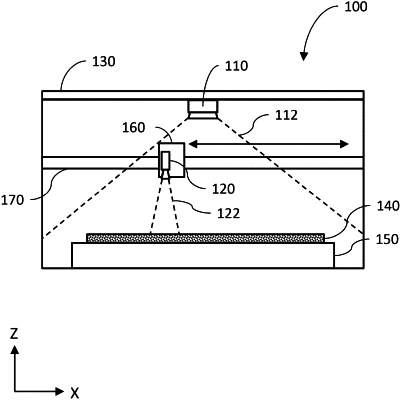| CPC G05B 19/19 (2013.01) [G05B 19/402 (2013.01); G05B 2219/40607 (2013.01); G05B 2219/41092 (2013.01)] | 20 Claims |

|
1. A computing system, comprising:
at least one processor;
a non-transitory computer-readable medium; and
program instructions stored on the non-transitory computer-readable medium that are executable by the at least one processor such that the computing system is configured to:
access one or more images showing (i) at least a portion of a material bed located inside an enclosure of a computer-numerically-controlled machine and (ii) a workpiece positioned on the material bed, wherein the one or more images are captured by one or more cameras located inside the enclosure of the computer-numerically-controlled machine;
process the one or more images to identify one or more differences in the one or more images relative to one or more known physical characteristics of the computer-numerically-controlled machine and (i) a thickness of the workpiece or (ii) a height of an upper surface of the workpiece relative to the material bed;
determine a mapping relationship by mapping pixels in the one or more images to corresponding physical locations within the computer-numerically-controlled machine in a manner that compensates for the identified one or more differences;
generate a machine file or a motion plan for an intended fabricating pattern based at least on the determined mapping relationship; and
cause the computer-numerically-controlled machine to implement the intended fabricating pattern on the workpiece by delivering electromagnetic energy to the workpiece based on the machine file or the motion plan.
|